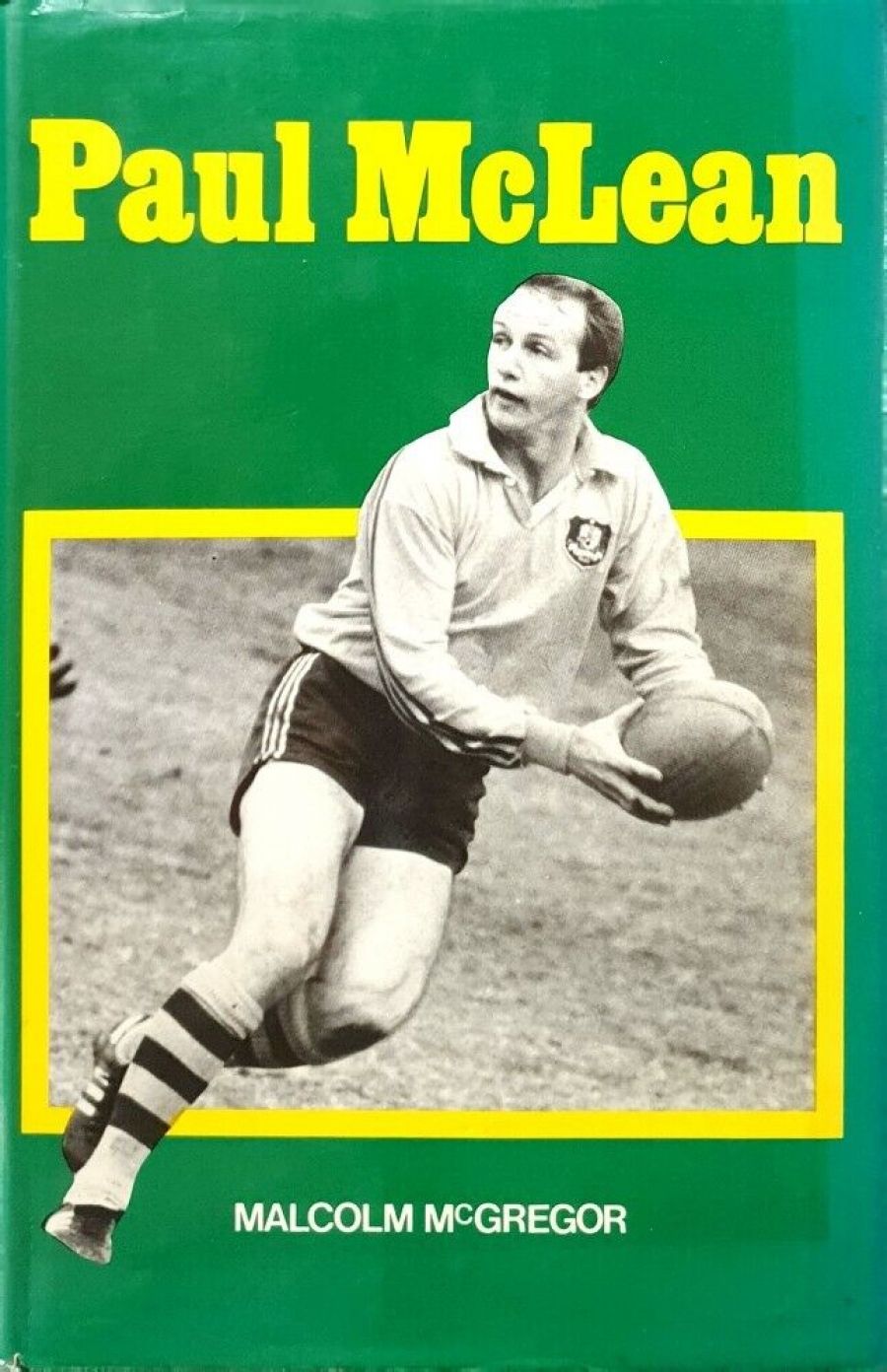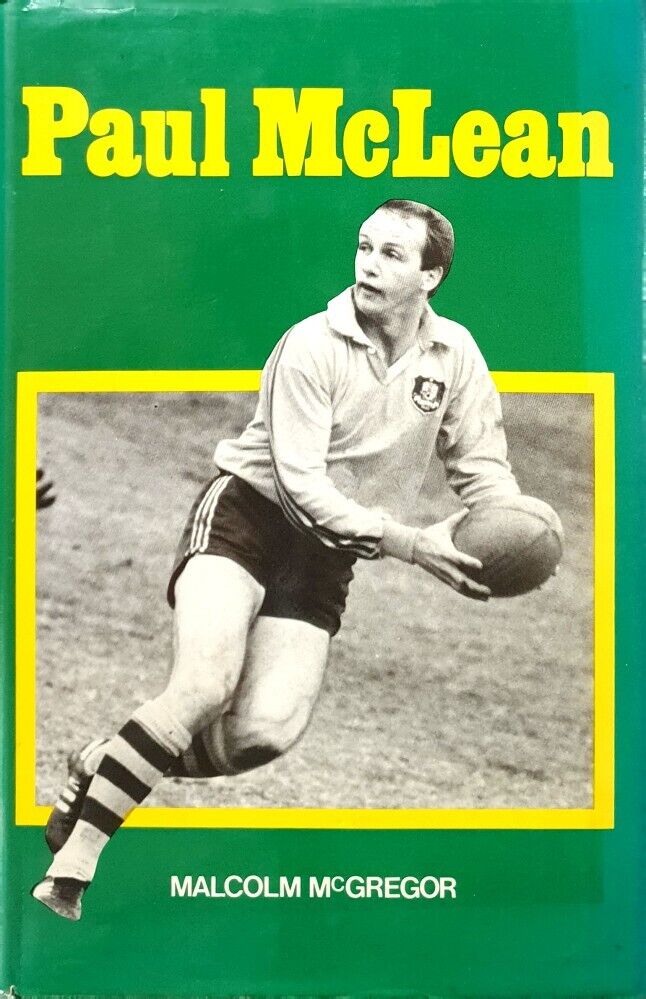
- Free Article: No
- Contents Category: Sport
- Review Article: Yes
- Article Title: The Art that Conceals Art
- Article Subtitle: Rugby Union artist
- Online Only: No
- Custom Highlight Text:
Paul McLean was an uncommonly gifted Rugby Union player who represented Australia over the period 1974 to 1982. A long career by Australian Rugby standards, McLean’s period at the top coincided with the emergence of Australian Rugby from a period in the doldrums. He played his first Test at a time when the Australian Rugby team had an ordinary international record; talented and entertaining it was, but Australia was not quite one of the great Ruby nations. By the time McLean retired, Australian Rugby had been transformed. It had won series at home against Wales, France and New Zealand. And it had completed an impressive and successful tour of the UK, marred only by a poor record in the Tests.
- Book 1 Title: Paul McLean
- Book 1 Biblio: UQP, $25.00, 218 pp
- Book 1 Cover Small (400 x 600):

- Book 1 Cover (800 x 1200):

All this is by way of background; for McGregor’s book is not simply a chronicle of McLean’s contribution to this tremendous growth in stature of Australian and Queensland rugby. It is also an account of the quite bitter disputes that occasionally erupted in N.S.W. and Queensland rugby circles over this period, very often over the merits or otherwise of McLean.
That a man with McLean’s record should have occasioned such disputes will surely perplex rugby historians of the future. Except on a few occasions, McLean played ill the pivotal position ill a Rugby team known as ‘five-eighth’. He displayed all the athletic skills expected of players in. that position; an uncanny ability to ‘read’ the pattern of play, a talent which seems to set some footballers apart; and just for extras, he was an outstanding goalkicker in a sport where goalkicking often determines the outcome of matches. One statistic should suffice. He personally scored more than half the points Australia registered in the thirty Test matches he played during his career, averaging over eight points per Tests. No-one else in Australian rugby history has come anywhere near his total of 262 points.
But disputes there were; and McGregor has endeavoured to set the record straight, dealing in careful, even painstaking fashion with McLean’s various challengers from NSW and his response to them; the ups and downs of McLean’s own form and fitness; and the vehemence with which the sporting journalists from the two States joined (and fuelled) the debate. The care with which McGregor has researched his subject is evident throughout and is one of the great strengths of this book.
McGregor handles the contentious aspects of McLean’s career well; yet it is but one part of the entire story, which begins with indications at an early age that McLean would develop as a gifted athlete. The brief treatment of McLean’s youth serves as a backdrop to what is a narrative account of his representative rugby career, arranged chronologically. Too often in sporting chronicles this sort of narrative quickly begins to pall. But McGregor breaks up the career story with interesting and informative digressions, such that I for one never tired in the reading.
And what a career McLean’s was. He joined the Queensland rugby team just as it was developing into a formidable unit built around an efficient and menacing pack of forwards. He slotted in behind this pack beautifully, putting to splendid use the bounteous supply of possession so arduously grafted by it, directing the fleet-footed traffic outside him, and kicking goals when required.
McGregor has done Australian Rugby a great service with this book, for it will endure as a penetrating account of perhaps its most successful era to date. The book is well-presented, with vivid and informative illustrations and a good index. On the whole McGregor’s prose style suits his subject well. Just occasionally the efforts to evoke the atmosphere on particular occasions seem contrived. But this is a mere quibble – McGregor has written a serious sporting book, which while guiding us through McLean’s career also teaches us much about how the great improvements in our rugby came out, and the men responsible.
Some may complain that the book is just too praiseworthy of its subject. After all, to this day many rugby buffs flatly refuse to rank McLean among the greats of Australian Rugby: McGregor obviously thinks he does, and (unlike many malignant scribes) has taken the trouble to document and to argue his case, which history will likely demonstrate should have been self-evident at the time.
Perhaps one reason why McLean’s reputation today is less than it should be lies with his style of rugby. Ever unobtrusive on the field, he chose to scheme his way around, reading the play intently, intervening as necessary, and seemingly trotting up in support just when most needed. A comment from a Sydney coach after McLean had inflicted another drubbing on his team was apt. Peter Crittle likened McLean to ‘an old suburban professor pottering around in a garden he has known all his life.’ It may not have been electrifying to watch, but its effectiveness has seldom been equalled.
Those of us who learned so much about the game watching McLean play, will want to cling to our memories. As the years roll by, McGregor’s fine book will help us immeasurably in this pleasant task.


Comments powered by CComment